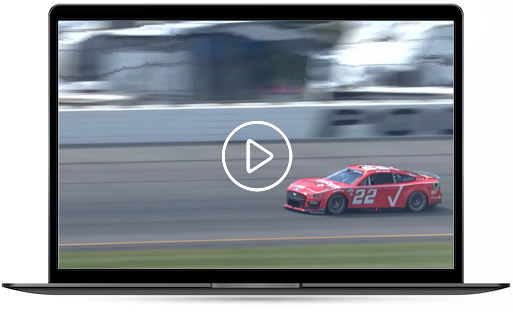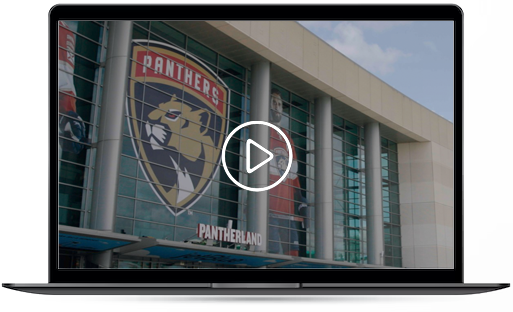Since 1948, NASCAR has championed the love of racing. This 75-year-old organization that sanctions and produces stock car racing traces its origins to the very first races at Daytona Beach, Florida. Thanks to the vision of founder Bill France Sr., NASCAR has since become a cherished institution welcoming fans from all over the world.
NASCAR has a uniquely passionate fan base, with many fans now hailing from multi-generational NASCAR families. It's not uncommon for fans to take an entire week off from work and other commitments to personally experience the excitement leading up to a race with other fellow fans.
"There's a real sense of community. NASCAR fans love NASCAR, and they want you to love it as well," said Tim Clark, EVP, Chief Brand Officer at NASCAR, who has been a fan himself since childhood. "They're very welcoming. You can be at any NASCAR race for the first time and really feel connected from the moment you walk in the gates."
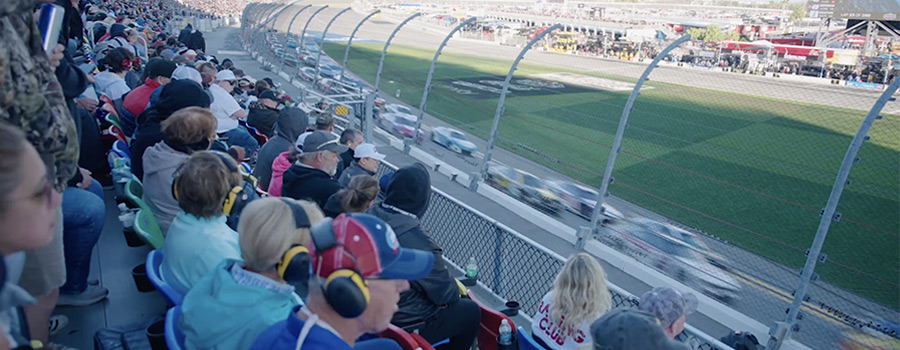
NASCAR fans need to stay connected
More so than in years past, today's fans arrive at sporting events expecting their digital devices to work seamlessly. "That's probably the biggest change I've seen in the last five or even 10 years—the expectation that technology will work, and it will be better than the last time I was here," said John Martin, VP, Chief Technology Officer at NASCAR.
The challenge is highlighted at Daytona International Speedway, headquarters of NASCAR. At the DAYTONA 500, hundreds of thousands of fans gather to watch the drama unfold at one of the largest outdoor sporting venues in the world. "It's like a small city wrapped inside of this venue," Clark explained. "There are other large sporting event venues around the world that you could fit 10 times over inside of the footprint of this track." The scale of both the venue and the crowds is staggering. "Crowds come, they're here all week, and they take over," said Martin. "That's a lot of stress on technology and a lot of stress on the network. You've got to be prepared to handle that spike in bandwidth."
Frank Kelleher, President at Daytona International Speedway , who was once a driver himself, stresses the need for racing fans to stay connected. "We have fans that are coming from all 50 states plus 20 countries," Kelleher said. "It's no different than going on a trip or a destination vacation. Your cell phone needs to work, and you need connectivity. You need the ability to check in with your boss, with your colleagues or maybe with the babysitter. It's a fundamental part of the guest experience to still stay connected with the world."
When such large numbers of fans show up, however, the resulting network congestion made it nearly impossible to meet fan expectations. "Whether you worked in the sport or you were a fan coming to enjoy an event, it was understood that service was going to be a challenge," Kelleher said. It was not uncommon for fans to have to wait to get back to their hotels before they could send their text messages and emails. "We heard it loud and clear that the connectivity wasn't what you would expect from a major sporting event," Martin added.
Given the scale of the venues and events that take place, NASCAR had no illusions about how challenging it would be to improve the connectivity at its racetracks.
Connectivity is no longer a nice-to-have. It's a must-have.
Tim Clark, EVP, Chief Brand Officer, NASCAR
"But it's not something that we could get wrong." So NASCAR began looking for the right partner to help them modernize the network connectivity at each of their tracks.
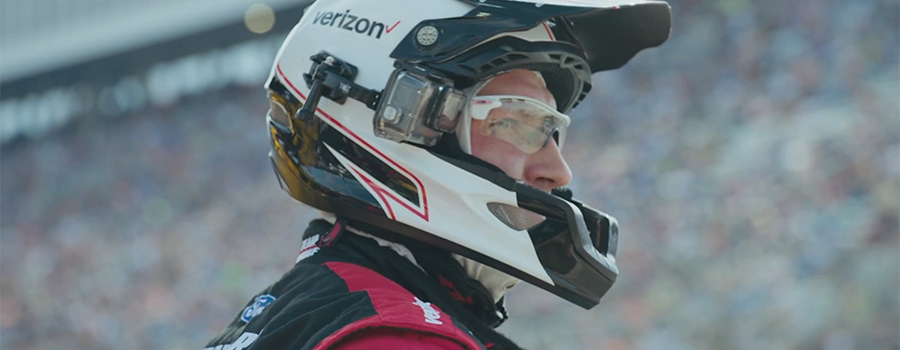
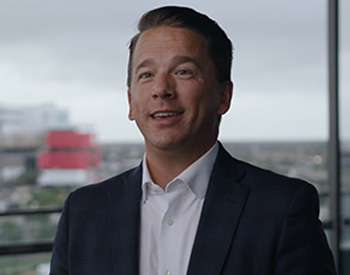
You really can't draw a comparison to life pre-Verizon to life post-Verizon showing up at a racetrack. I give them 10 out of 10. They deliver, and they're there for us whenever we need them.
Frank Kelleher, President, Daytona International Speedway
NASCAR lays down new technology tracks
Verizon proposed a three-year project to modernize network service at 10 NASCAR-owned and operated racetracks, connecting 750,000 seats, plus concourses, garages and operations buildings. Doing so would involve installing 9,000 access points (APs) and providing a turnkey solution that was built and managed by Verizon. This large-scale project was intended to address the connectivity needs of not just NASCAR fans but also the broadcast team covering each event, the IT and management teams supporting it, as well as the drivers and teams themselves.
The Verizon team began the project by spending a couple of days at each site to assess their unique requirements. For example, the Darlington Raceway in South Carolina is over 70 years old, with an unusual egg-like design. The grandstand at the Daytona International Speedway is over one mile long, and one end is higher than the other because it has to follow the curvature of the Earth. "The project kind of spans a century from a NASCAR perspective. It ranges from the least modern track—from the roots of where NASCAR started—through Daytona, which is the Great American Race," said Jason Rose, Senior Client Executive at Verizon Business Group.
Not only was each track distinct from the others, but it could have a wide range of variation within itself.
At one of our tracks, we actually had to have three different types of installations because the grandstands were built in three separate decades. It took flexibility and creativity to find the solution that would work at that entire facility—when it really was three different facilities in one.
— John Martin, VP, Chief Technology Officer, NASCAR
After completing the initial site surveys, Verizon took several weeks to carefully design a solution that would meet each track's specific requirements. The work was painstaking and incredibly detail-oriented, intended to identify and address any problems that could potentially compromise the project's success. For example, at Daytona, the Verizon team created 63 pages of AutoCAD designs outlining exact placement for nearly 2,100 APs, 450,000 feet of Cat-6 cable, 87 switches, 73 telecom rooms and 27 environmental enclosures, making it one of the largest U.S. venues with outdoor Wi-Fi.
Even with such intensive planning, some unexpected challenges still arose during the implementation phase. "Anytime you have a project that goes over three and a half or four years, and you have a pandemic in the middle of it, you're going to face a lot of challenges," Martin explained. "Again, you have to understand how large an installation this is. It's not just Wi-Fi and grandstands. It affects the entire facility, and it affects the entire backbone and core of what we do at these facilities. It was more than just a Wi-Fi installation. It was a technology upgrade that's going to last decades."
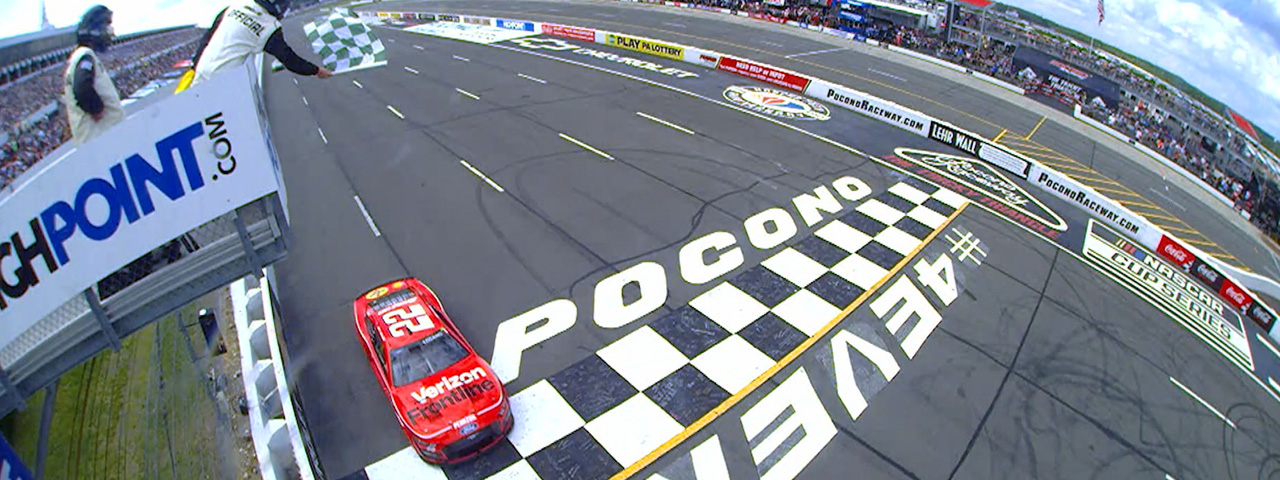
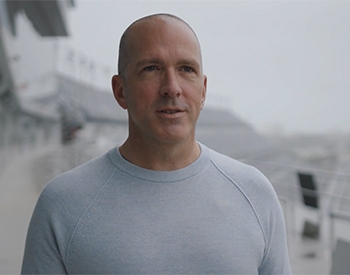
It's like a small city wrapped inside of this venue. There are other large sporting event venues around the world that you could fit 10 times over inside of the footprint of this track.
Tim Clark, EVP, Chief Brand Officer, NASCAR
Accelerated network connectivity wins rave reviews from NASCAR fans
NASCAR polls its fans after every event to gauge their thoughts on the experience. Martin said that connectivity satisfaction scores were through the roof after each Wi-Fi installation. "Those scores have really been going up. Fans are getting a whole lot more value for their ticket price since we installed Wi-Fi," he said. NASCAR reports that it is one of many fan experience enhancements that has helped increase attendance, attract younger fans and sell out more races.
Kelleher has observed the same advancements from his vantage point at Daytona. "You really can't draw a comparison to life pre-Verizon to life post-Verizon showing up at a racetrack. I give them 10 out of 10. They deliver, and they're there for us whenever we need them," he said. "The biggest smiles are really from our race fans when they're leaving because it truly has changed their event experience having Verizon at the World Center of Racing."
Verizon has also delivered crucial connectivity for operations. Verizon's Rose explained: "We power and connect all their ticketing gates—all their tickets, scanners and tracks. Every customer that has a ticket on their phone or a physical ticket. We make sure those scanners can scan their tickets, and they can get into the venue." This goes for all point-of-sale locations, too. "People can purchase food, drinks, and merchandise, and NASCAR, backed by Verizon, can enable those transactions," Martin added. "We can fix all kinds of issues with wait time and entrance gates, to say nothing of the content you can now get on your phone."
In July 2023, NASCAR brought in a new challenge when it presented its first-ever race through city streets: the Chicago Street Race at Grant Park. Strong network performance was essential for a high-quality fan experience there, too. "It was a huge success for NASCAR. Verizon was there delivering a temporary Wi-Fi solution for the fans of the Chicago Street Race, and we'll be there again next year," Rose said.
NASCAR's Wi-Fi investment allows them to better understand their fans race experience. For example, because the Wi-Fi access points have beaconing technology built into them, NASCAR can understand what fans do while they're at the track. "Do they go into the infield? Do they stay out in the midways? Do they go into their seating areas and spend their time in the concourses getting hot dogs? It allows NASCAR to understand their fans much, much better," Rose added. NASCAR knows this data is key to delivering the game-changing innovations fans expect.
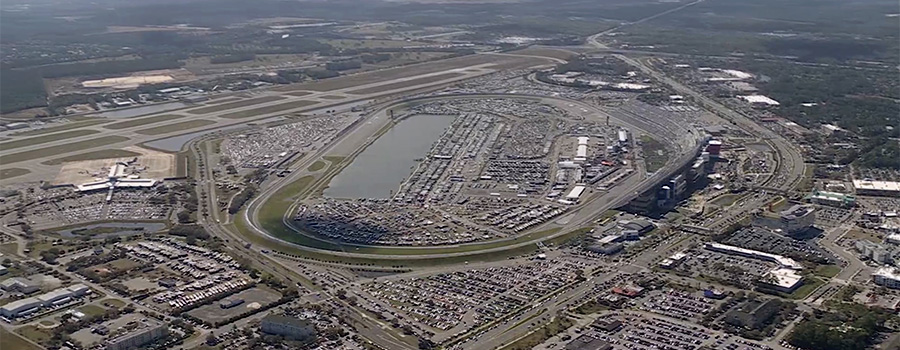
A strong partnership puts NASCAR in the driver's seat
NASCAR now has an open road with boundless potential for future innovation and no shortage of ideas for what could be next. "For the first time at NASCAR, with this installation and this technology, we're almost ahead of the product folks. It's been great to see the product team start to imagine all the things they can do for the fans," Martin said. Before long, NASCAR fans may be able to stream audio of their favorite drivers or even access multiple camera views of them while a race is in progress, along with real-time data, car telemetry and instant replay. If they want to hear live-streaming audio from pit crews, that may soon be possible, too. "I think all those things are coming here in the near future, and it's all because we put in this technology foundation," Martin added.
Along the way, NASCAR discovered just how much Verizon can deliver for its partners. "One thing that surprised us about the partnership with Verizon is just how big their reach is. There wasn't any sort of third party or technical group that they didn't have a connection to," Martin said. "They could say, 'Hey, come on out here and help these guys out,' and they were here. So the surprising thing for me was the breadth of what Verizon could do. I think some people think of them as just a cell phone company, but there's a whole lot more behind that curtain."
NASCAR and Verizon's partnership is just getting started. Said Clark, "I think we've over-delivered what we expected to. We both have lofty goals, and we certainly have lofty goals for each other in the partnership. I don't see any reason we won't continue to grow."
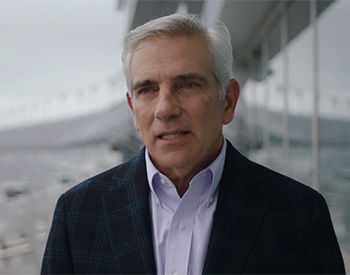
For the first time at NASCAR, with this installation and this technology, we're almost ahead of the product folks. It's been great to see the product team start to imagine all the things they can do for the fans.
John Martin, VP, Chief Technology Officer, NASCAR
